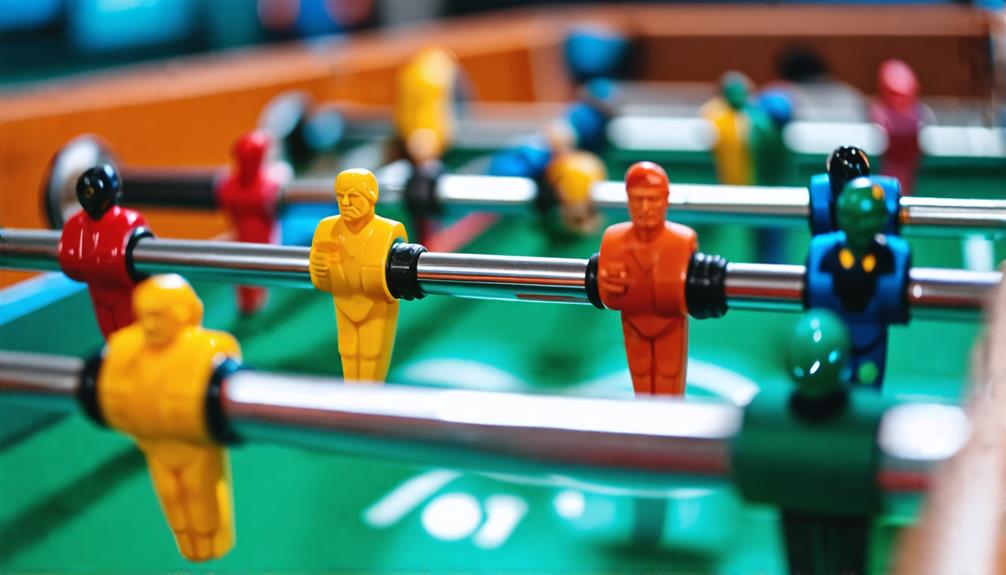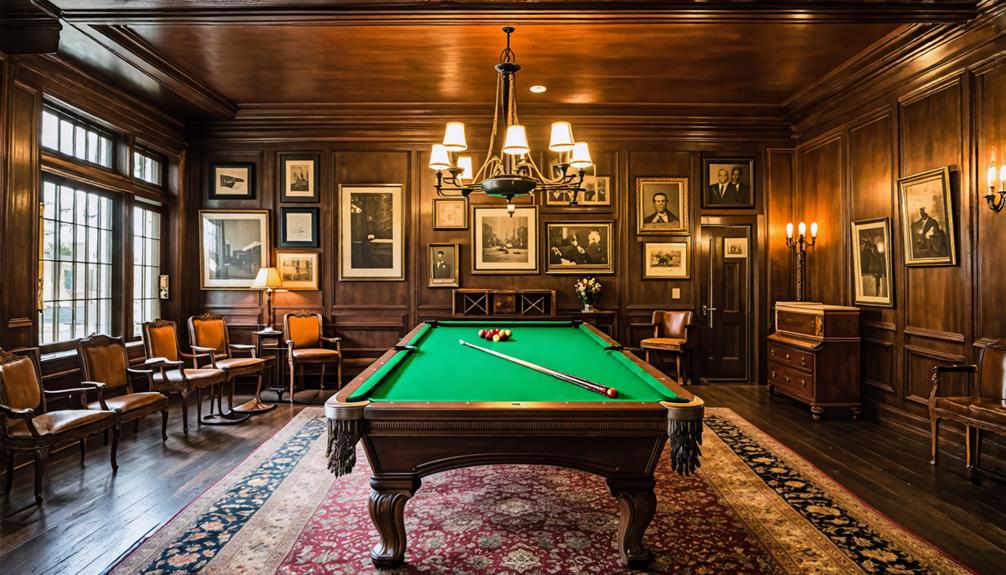Billiards Rules and Techniques for Beginners
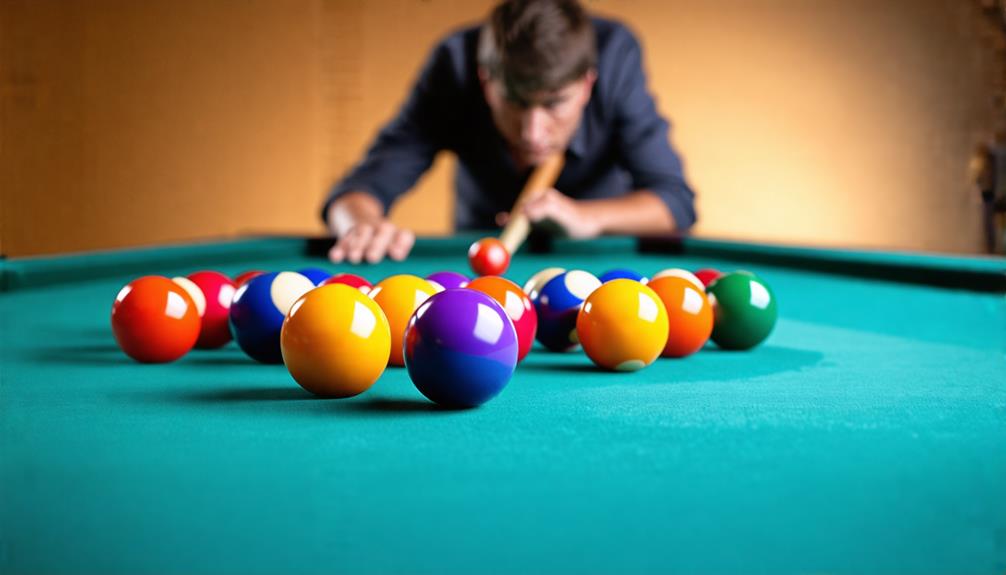
When starting out in billiards, understanding the basic rules and techniques is crucial for your progress. You'll need to familiarize yourself with the game's objective, the equipment used, and the fundamental rules that govern play. Adopting a solid stance and a relaxed grip can significantly improve your accuracy. Additionally, learning how to effectively score and control the cue ball opens up numerous strategic possibilities. However, before you chalk your cue, be aware of common pitfalls beginners face and how you can avoid them to elevate your game.
Object of the Game
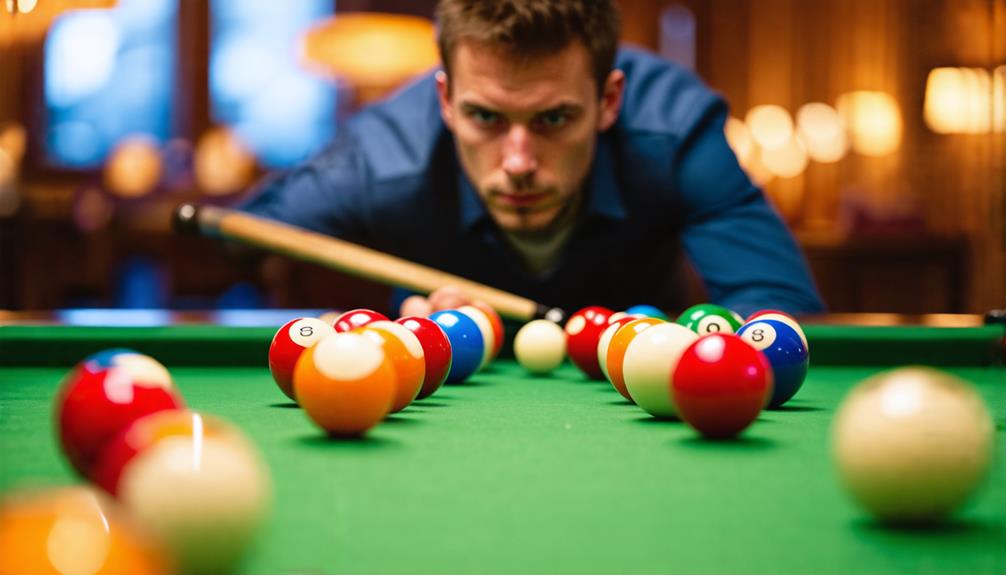
The object of billiards is to outscore your opponent by reaching a predetermined point total, typically 300 points. Players achieve this by skillfully using the cue ball to strike the object ball, aiming to score points through potting, cannons, or in-offs. Each successful shot increases your score, but the game's complexity lies in tactical gameplay. You must balance offense with defense, positioning the balls on the table to your advantage.
Shot selection is crucial; every move impacts your potential to score and affects your opponent's options. When it's your turn, carefully assess the arrangement of the balls. A well-placed shot can earn you points and create a challenging scenario for your opponent when they take their turn.
The game continues until a player misses a scoring shot, at which point the opponent plays from the current position. As you dive deeper into billiards, you'll discover that mastering the balance between scoring and strategy is key. Your ability to think ahead and anticipate the flow of the game can make the difference between victory and defeat.
Players and Equipment
Understanding the players and equipment in billiards is vital for enhancing your gameplay and strategy. In a typical pool game, two players face off, each using a cue ball—either the plain white or the yellow cue ball. You'll also need a cue stick, which can be made of wood or fiberglass, and its weight and balance significantly affect your shot precision.
The billiards table, usually measuring 12ft x 6ft 1.5in, features six pockets and a baize-covered slate bed, providing a smooth surface for play. Chalk is essential for maintaining optimal contact between your cue stick and the cue ball, thereby enhancing shot accuracy.
Here's an overview of the key equipment:
| Equipment | Description |
|---|---|
| Cue Stick | Made of wood or fiberglass, varies in weight and balance |
| Cue Ball | Either plain white or yellow, used by players |
| Billiards Table | 12ft x 6ft 1.5in with six pockets |
Familiarize yourself with these elements to improve your experience while playing billiards!
Basic Rules of Play
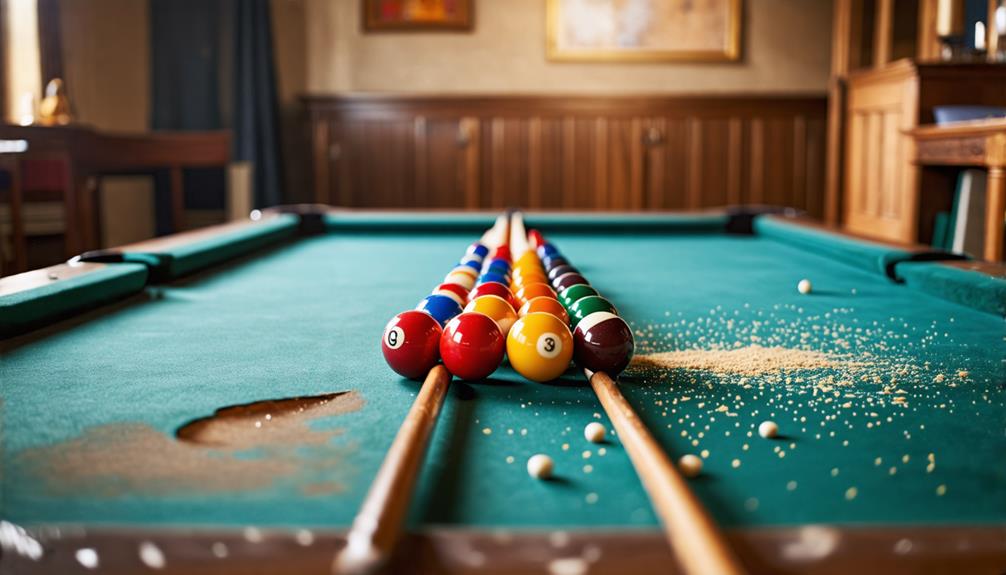
In billiards, players alternate turns striking the cue ball to interact with the other balls on the table. Each turn ends when a player fails to score. The game begins with the player striking the cue ball into the red ball, a crucial starting move. Successfully potting the red ball allows you to score points through various methods such as potting additional balls, executing cannons, or performing in-offs.
During your turn, it's essential to focus on the balls on the table. You must hit your designated initial ball before making contact with any other balls. Striking your opponent's ball first constitutes a foul, awarding 1 point to your opponent and leaving the table unchanged for their next shot. Additionally, ensure your cue stick doesn't touch the felt during play, as this is also considered a foul. Understanding these fundamental rules provides a solid foundation for enhancing your billiards skills. With practice, you'll become more adept at the flow of play and the strategies needed for effective scoring.
Scoring in Billiards
Scoring in billiards revolves around various methods that reward players for skillful shots and strategic play. You can earn points by potting the red ball (3 points) or your opponent's cue ball (2 points). The initial hit is crucial; if you first strike the red ball and it goes in off, you score 3 points. Additionally, executing a cannon—hitting both the red ball and your opponent's cue ball in a single shot—earns you 2 points.
You can optimize your scoring by combining shots, potentially achieving up to 10 points in one turn, such as by potting the red ball and going in off your opponent's cue ball. Your turn continues until you fail to score or commit a foul. If you foul, your opponent scores 1 point and may also take advantage of the current ball positioning. Understanding this cumulative scoring system is fundamental for billiards players, as multiple scoring opportunities often arise within a single shot. Focus on shot selection to create favorable situations for yourself while minimizing opportunities for your opponent.
Techniques and Strategies
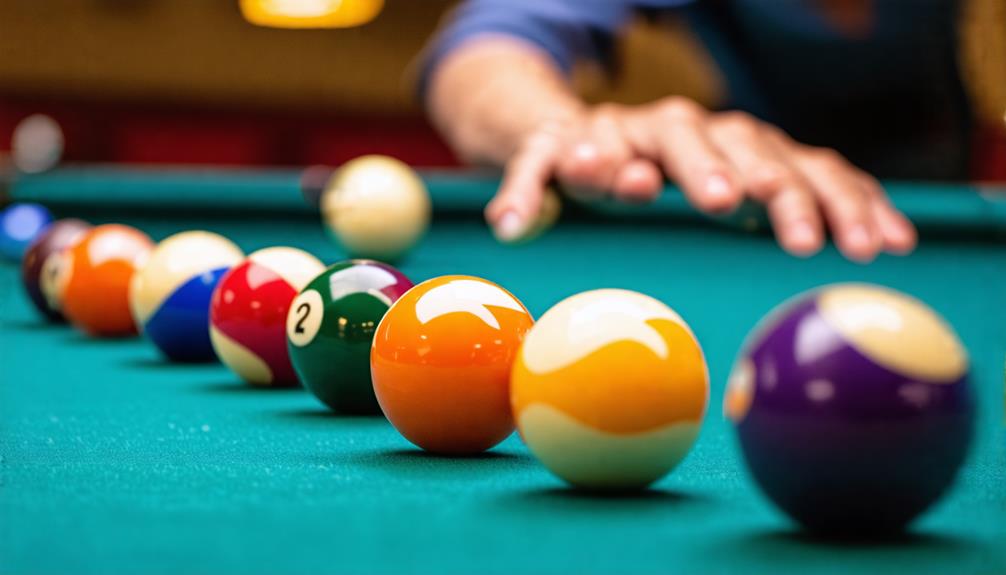
Mastering the right techniques and strategies is essential for elevating your billiards game and improving overall performance on the table. Begin by establishing a stable stance, with your feet shoulder-width apart, and align your body with the target object ball. This setup enhances shot accuracy and control. When striking the cue ball, maintain a relaxed grip on the cue stick to ensure a smooth, error-free stroke. Incorporate shot planning and angle estimation into your gameplay. Visualize the path the cue ball needs to take to make successful shots. Practicing the ghost ball method can significantly improve your aiming skills. Additionally, mastering spin techniques such as top spin, back spin, and side spin will allow you to control the cue ball's trajectory after contact. This skill is crucial for better positioning for subsequent shots and for navigating the table effectively.
Common Game Variations
Billiards offers several exciting game variations, each with its own unique rules and strategies that can enhance your experience on the table. Trying out these variations not only hones your skills but also adds a layer of enjoyment to your practice sessions.
Here are three popular options you should consider:
- 8-Ball: In this classic game, your objective is to pocket all your assigned balls (either stripes or solids) and then sink the black eight ball in a declared pocket to win.
- 9-Ball: This fast-paced game requires you to pocket balls in numerical order, with the ultimate goal of sinking the nine ball. This variation emphasizes strategic plays and defensive shots.
- Straight Pool: Also known as 14.1 continuous, this game allows you to score points by pocketing any ball on the table. The aim is to reach a predetermined point total, typically 100 or 150 points.
Other variations like One-Pocket and Cutthroat Pool offer unique challenges that focus on strategic plays and blocking opponents. Mastering these game variations will refine your billiards techniques while offering enjoyable experiences with friends.
Conclusion
Mastering billiards as a beginner involves understanding the rules and refining your techniques. Focus on your stance, grip, and shot planning to improve accuracy and control. Practice regularly, especially with spin techniques, to enhance your gameplay. With time and dedication, you'll confidently pot balls and appreciate the strategic depth of the game. Grab your cue, practice, and enjoy the table!
